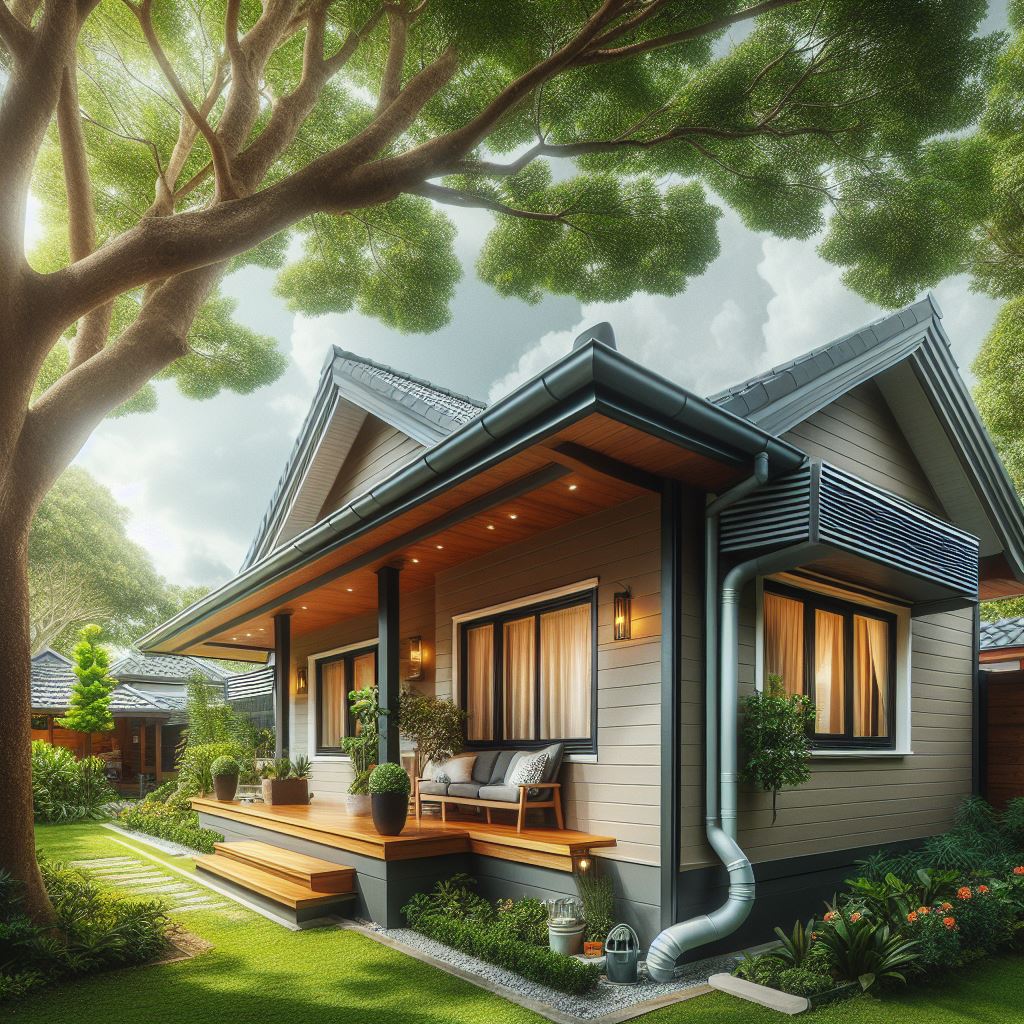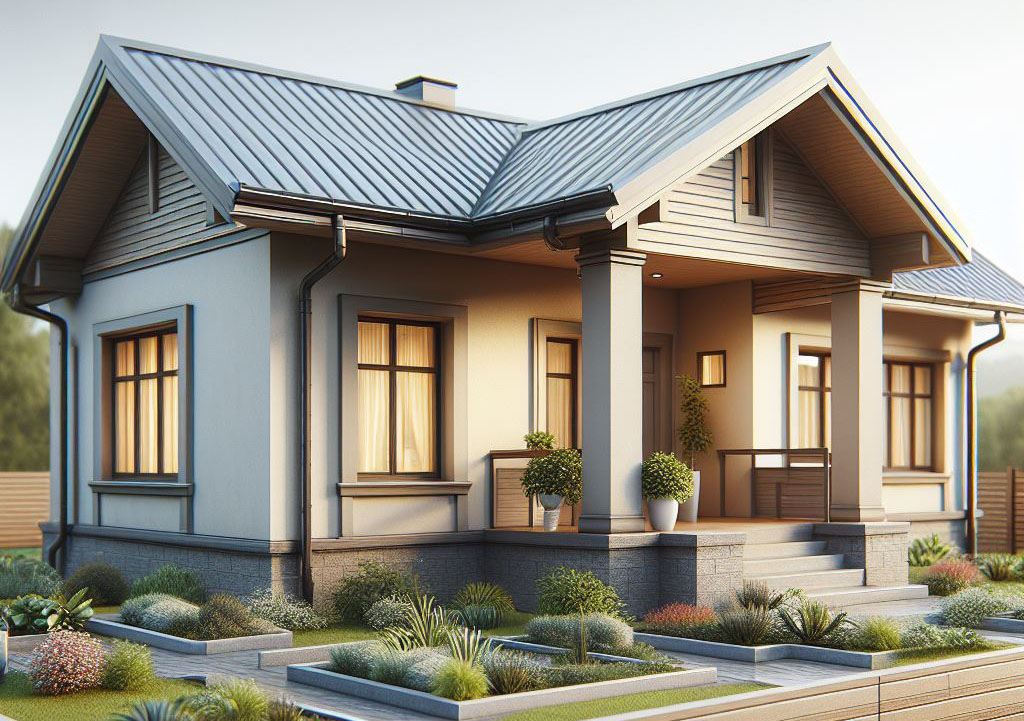Embarking on the journey of choosing the right roofing material is not just a decision, it’s a commitment to the longevity and integrity of your home. For the dedicated home handymen and the tireless self-employed construction professionals, metal roofing emerges as a beacon of durability and aesthetic appeal in the vast sea of building materials. This discussion aims to serve as your compass, guiding you through the intricacies of metal roofing with an even-handed approach that illuminates both its shining virtues and its few, manageable drawbacks. As we navigate these waters together, let’s arm ourselves with knowledge to make choices that stand the test of time and the elements.

Overview of Metal Roofs
Metal roofs represent the pinnacle of engineering’s response to the demands of shelter and protection. They come in a variety of materials—aluminum, steel, and copper, to name a few—each offering unique benefits to the architectural tapestry of a home. The array of styles available, from the sleek lines of standing seam to the rustic charm of metal shingles, allows homeowners to achieve virtually any aesthetic. Tracing its roots back through centuries, metal roofing has continuously adapted, embracing advances in technology to enhance its protective capabilities and visual appeal, making it a staple in both residential and commercial construction.
Pros of Metal Roofs
- Durability and Longevity. Metal roofs are the stalwarts of roofing materials, capable of enduring the fiercest onslaughts from nature. Be it hurricanes, snowstorms, or wildfires, they stand unyielding, offering unparalleled protection for decades. Their longevity is a testament to their resilience, often outliving their owners and significantly reducing the need for costly replacements.
- Energy Efficiency. The genius of metal roofing lies in its ability to reflect the sun’s radiant heat, acting as a shield that keeps interiors cooler and slashing energy costs in the process. This reflective capacity is akin to having an invisible barrier against the summer sun, ensuring comfort without the burden of exorbitant cooling bills.
- Sustainability. Metal roofs are a nod to environmental stewardship, crafted predominantly from recycled materials and fully recyclable at the end of their lifespan. This circular lifecycle minimizes waste and supports sustainable building practices, echoing the growing demand for eco-friendly construction solutions.
- Low Maintenance. The allure of a metal roof is not only in its strength but also in its simplicity. Freed from the constant upkeep required by traditional materials, homeowners can enjoy peace of mind knowing their roof demands little more than periodic checks and basic debris removal to maintain its integrity and appearance.
- Fire Resistance. In regions where fire poses a perennial threat, metal roofing offers a bulwark of safety. Its fire-resistant properties provide an added layer of security, safeguarding homes against the ravages of wildfires and lightning strikes, and offering homeowners a precious commodity: peace of mind.

Cons of Metal Roofs
- Cost. Straight off the bat, metal roofs command a higher initial outlay than their asphalt counterparts. It’s akin to choosing between a reliable, long-lasting tool and one that might save you money today but will need replacing sooner. Over time, the investment in metal roofing pays off through reduced maintenance costs and longevity. Consider it a wise investment in your home’s future, offering durability that often offsets the initial sticker shock.
- Noise. It’s common knowledge that metal roofs can turn a serene rain shower into a concert of pitter-patter. However, with the right installation techniques, such as using quality underlayment for sound dampening, this concern becomes negligible. Think of it as adding a layer of quiet to your home’s protective shell.
- Denting and Marring. Similar to the way a well-used tool bears marks of its service, metal roofs can show signs of wear like denting from hail. Yet, selecting the appropriate metal gauge and a resilient finish can greatly mitigate this risk. Opt for materials that bring both strength and aesthetics to the forefront, ensuring your roof remains both functional and visually appealing despite nature’s trials.
- Installation and Repair Complexity. Unlike the straightforwardness of laying down shingles, installing a metal roof is an art that requires specific skills, tools, and knowledge. This complexity underscores the importance of choosing a contractor with a proven track record in metal roofing. Ensuring the job is done correctly from the start preserves the roof’s integrity and warranty, and secures your investment.
- Thermal Expansion and Contraction. Metal’s natural propensity to expand and contract with temperature changes is a consideration that cannot be overlooked. Yet, with proper installation practices, including the use of expansion joints and appropriate fastening techniques, this characteristic is managed effectively. It’s about allowing your roof the space to breathe and move without compromising its protective function.

Installation Considerations
Embarking on a metal roof installation is a journey that requires meticulous planning and the right partner. The cornerstone of a successful installation lies in selecting a seasoned contractor familiar with the nuances of metal roofing. This partnership is pivotal to navigating the project’s intricacies, from adhering to local building codes to ensuring the structural integrity of your home can support the new roof. Engage in open dialogue with your contractor, setting clear expectations and understanding the project scope to ensure a seamless transition to metal roofing.

Maintenance and Care
The allure of metal roofing is not only in its robust protection but also in its ease of care. Routine maintenance is simplified to occasional inspections and debris removal, ensuring your roof’s longevity and aesthetic appeal. After extreme weather, a quick survey for any signs of distress such as scratches, dents, or loosened panels can preempt potential issues. Addressing these minor concerns promptly can prevent more significant problems down the line, maintaining the roof’s integrity and appearance.
FAQ Section
Retrofitting a metal roof over existing shingles is a viable option, offering a cost-effective upgrade without the need for a complete tear-off. However, it’s crucial to assess the structural capacity of your home to handle the additional weight and to ensure there’s no pre-existing damage. This approach not only streamlines installation but also contributes to the roof’s insulation and soundproofing qualities.
The inherent durability and fire resistance of metal roofs are often recognized by insurance companies, potentially leading to reduced premiums. It’s advisable to consult with your insurance provider to explore any potential savings, as policies vary widely.
Metal roofs boast remarkable versatility, performing admirably across a wide range of climates. Their reflective properties can significantly reduce cooling costs in hot climates, while their strength and design are advantageous for shedding snow in colder regions. The choice of material and finish can further tailor a metal roof to specific environmental conditions.
Walking on a metal roof is possible but should be approached with caution. Wear soft-soled shoes and tread lightly, preferably along the supports or seams, to minimize any risk of damage. Always prioritize safety, and when in doubt, seek professional assistance for roof inspections or maintenance.
The selection of a metal roof should consider several factors, including local climate, architectural style, and budget constraints. Materials such as aluminum are ideal for coastal environments due to their resistance to salt corrosion, while steel might be a more cost-effective choice for a variety of settings. Engaging with a knowledgeable contractor can provide invaluable guidance in making the best choice for your specific needs and preferences.
